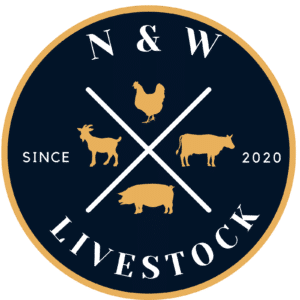
You hear a lot of talk about ‘Coxie’ causing disease in livestock.
This parasite, more formally called ‘coccidiosis’, affects young sheep, cattle and goats, plus a range of other animal species, including pigs and chooks. As well as death and sickness, Coxie can slow growth rates in young stock.
What are the signs of coccidiosis?
Coxie can occur in newborns, but is most often seen in pre-weaner to weaner-age animals. Lambs will sometimes die before you notice any signs of disease. Some lambs will have black or red scours. Calves can be seen straining to pass dung and when it comes out it is red and bloody (‘strawberry jam faeces’). They may strain so hard, they poke out a bit of their own rectum (prolapse). Goat kids will lose body condition and go downhill quickly. Adult goats can also be affected.

What causes coxie?
Coccidiosis is caused by a tiny single-celled parasite (protozoa) called Eimeria. Each type of animal has their own type of Coxie. Cattle may have up to 11 different species, but only a few of them cause disease. The eggs (oocysts) are deposited on the pasture in the animal’s dung and take 7 days to develop into infective stages (sporulation), which then contaminate the pasture for many months.
How can it be diagnosed?
Your vet will help with diagnosis of any disease in livestock. If you submit samples for a worm egg count, the lab will usually report the presence of coccidiosis in their report. The coccidia eggs (oocysts) can be seen under the microscope and are classified as low, medium or high numbers. The actual numbers don’t correlate directly with disease in stock, because the animal may already be very sick before large numbers of oocysts are produced.
When do you see coxie?
Although it is seen most often over the winter months, Coxie is present in normal flocks and herds year-round. When conditions are right, such as crowding, wet, muddy yards or paddocks, or if stock are suffering from worms, low nutrition or other conditions, the coccidiosis will take advantage and overwhelm them.
How do we treat or prevent coxie?
Consult your vet for diagnosis and treatment. Shifting calves into a fresh paddock before the 1-week period for sporulation of the coccidia eggs will slow uptake and reduce risk of infection. Treating concurrent conditions such as undernutrition or worms is sometimes sufficient to enable stock to overcome the disease.
Young animals with severe coccidiosis may need electrolytes and supportive treatment.
Preventive products are usually mixed in feed or pellets. This is often done when there is a high risk, such as in lamb feedlots, cattle feedlots or goats grazing with high stocking density. Talk to your vet or nutritionist to decide on the best approach for your stock. Treatments are also available for some animals, including highly effective products for calves.



